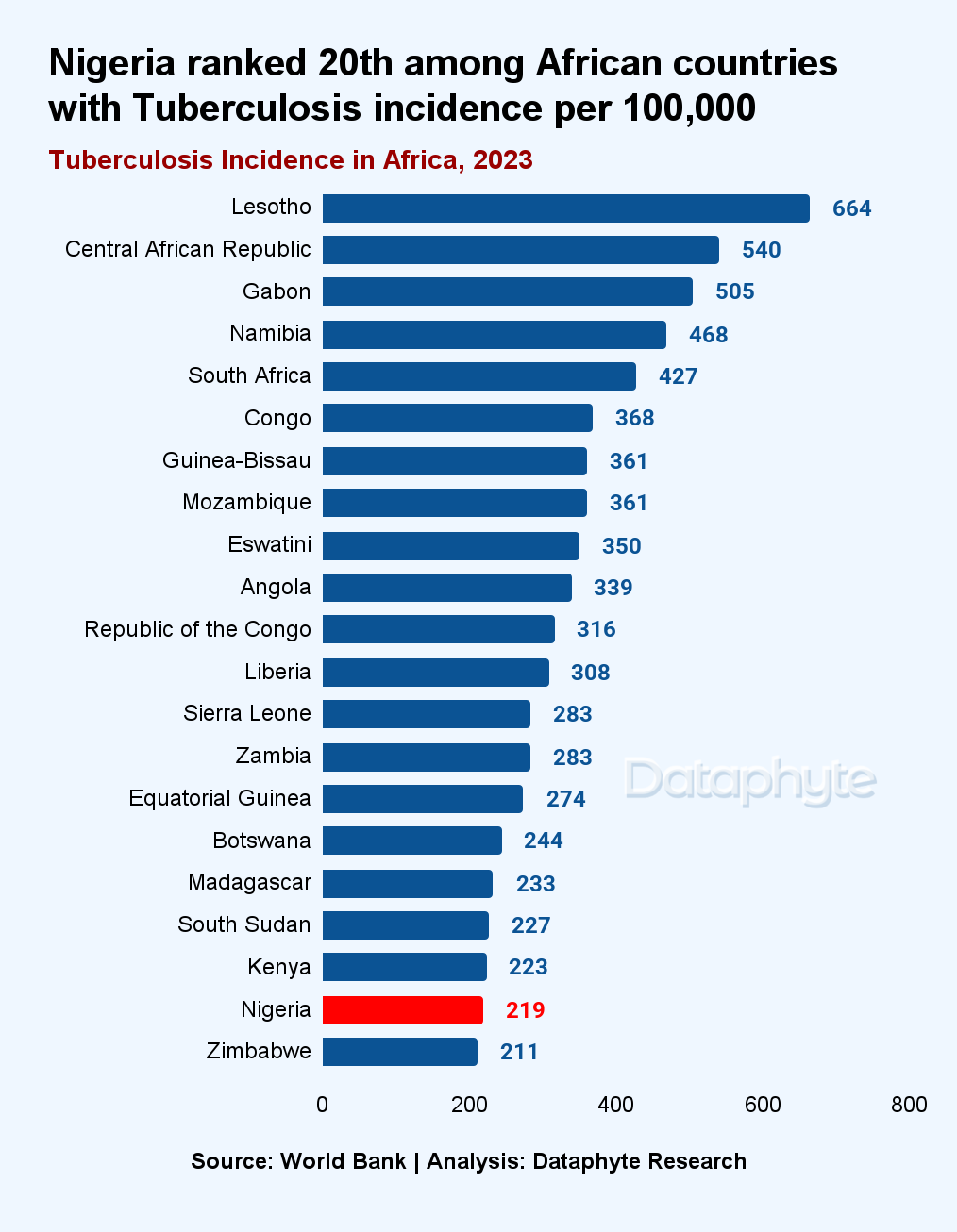Nigeria’s 2023/2024 Demographic and Health Survey (NDHS) reveals that 54% of unmarried women and 48% of unmarried men would not consider a relationship with a tuberculosis (TB) survivor. This indicates that disease survivors are likely to face marital rejection, with women more likely than men to reject a partner who has had TB.
This reflects a significant level of stigma; this stigma may be linked to TB’s classification as a communicable disease, capable of spreading through contact with infected individuals, according to the World Health Organisation.
Such attitudes reflect a deep social bias, and according to research published by the National Library of Medicine, they have the potential to undermine TB control efforts, damage the well-being of those affected, and contribute to further transmission and worsening of the disease.
The NDHS data also shows that more men reported experiencing common TB symptoms, suggesting they may be more likely to face heightened stigma compared to women.
Globally, TB impacts nearly 6 million men each year, including 1.3 million in the WHO African Region. By 2023, Nigeria ranked 20th in Africa, with an average of 219 cases per 100,000 population. WHO data shows Lesotho, the Central African Republic, and Gabon have the highest annual TB incidence rates per 100,000 population on the continent.
 According to the Centres for Disease Control and Prevention (CDC), the risk of transmitting TB is temporary, meaning a person with active TB disease is contagious only for a limited period, primarily before and shortly after starting treatment. During this time, they are most likely to spread the disease to people with whom they spend time daily, such as family members, friends, and coworkers.
According to the Centres for Disease Control and Prevention (CDC), the risk of transmitting TB is temporary, meaning a person with active TB disease is contagious only for a limited period, primarily before and shortly after starting treatment. During this time, they are most likely to spread the disease to people with whom they spend time daily, such as family members, friends, and coworkers.
Gender Gaps in Disease Stigma
The stigma and discrimination are not limited to TB; they also extend to other communicable diseases, such as HIV. While the gender difference is small, data show that women tend to hold higher levels of stigma than men toward people with communicable diseases.
For instance, in 2018, the NDHS asked women and men two questions to assess discriminatory attitudes toward people living with HIV. The findings showed that 59% of women and 58% of men expressed such attitudes.
Compared to the 2023 NDHS data, women display more stigma toward TB survivors than toward people living with HIV, while men show higher discriminatory attitudes toward HIV than toward TB. This suggests that stigma and discrimination vary by gender, influenced by the type of disease and the perceived risk of transmission.
-and-hiv-(2018).png) The BMJ Global Health notes that ending TB requires addressing the socially produced vulnerabilities that affect all genders. Its research shows TB affects more men than women, partly due to behaviours and practices, such as alcohol consumption and tobacco use, that increase the risk of exposure.
The BMJ Global Health notes that ending TB requires addressing the socially produced vulnerabilities that affect all genders. Its research shows TB affects more men than women, partly due to behaviours and practices, such as alcohol consumption and tobacco use, that increase the risk of exposure.
Stigma following a disease diagnosis can trigger a range of harmful consequences, including psychological distress, social isolation, and reduced access to healthcare and support systems. Its effects extend beyond individuals to families and entire communities, hindering recovery and increasing the risk of poor health outcomes.
In the case of tuberculosis, stigma fosters a culture of silence, fear, and shame, with the emotional and social toll often exceeding the harm caused by the disease itself.
Thanks for reading this edition of SenorRita. It was written by Kafilat Taiwo and Salako Emmanuel.
